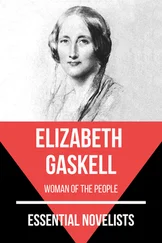Bahia, or Salvador, was the first capital of Brazil, appropriately enough since it was in the State of Bahia that the country had its beginnings. Cabral first landed on the coast there, and Caminha’s first letter describes it. The year after Cabral’s voyage another was made, with Amerigo Vespucci as navigator. This time the “bay,” Bahia, was discovered, and the name São Salvador da Bahia de Todos os Santos (Saint Saviour of the Bay of All Saints) given to it. In the following year, Vespucci led the first expedition into the interior of the country, starting from Bahia. In 1534 the first captaincy was established, a small group of thatched huts inside a stockade. This was very soon attacked and destroyed by Indians, who also ate some of the unhappy adventurers.
The first Governor-General of Brazil, Tomé de Souza, arrived in 1549, with four hundred soldiers and six hundred convicts, and orders from the King to establish a “large and strong settlement,” to serve as capital of the new country. He brought with him a map of the new city, complete with walls and bastions, churches and public buildings. According to the Portuguese tradition, it was to be built on the heights overlooking the sea, more like a fort than a town, for the sake of defense. According to the stories, the Governer-General helped in the construction with his own hands. Besides the 1,000 men, the first inhabitants were principally “pacified” Indians, and the huge family and following of the most famous of the legendary convict-chiefs, “Caramuru,” who had been in Brazil since 1510, and who had married an Indian princess, the beautious “Paraguaçu.”
The town grew so quickly that it overflowed the walls and descended to the beaches, dividing into the “higher” and “lower” towns, as it still is today. Cable-cars and elevators now connect the two towns; the chief elevator, that has become almost a symbol of Bahia, is the Lacerda, 234 feet high, — first built in 1875.
Bahianas are extremely proud of their city; they call it “the good place.” The Cariocas, referring to the large numbers of Bahianas who come south to Rio every year, add to this ironically, “Yes … Bahia’s the good place — it there, and me here!”
For travellers approaching by sea, it is usually their first Brazilian city, and the huge port, with its picturesque water-front life, heat, pungent smells, and large Negro population, makes a first and permanent impression as being “typically Brazilian.” With its ancient forts on the ocean, its magnificent baroque architecture (supposedly three hundred churches), crowds of all colors, frequent religious processions, surviving folk-costumes, street vendors, open-air markets and restaurants, displays of folk-art — it is more what one expects Brazil to be like than any other city. Protected by the viceroys, and fabulously rich during the period of the sugar boom, it was also the biggest port of entrance for the Negro slaves, from Guinea, Mozambique, and Angola. Although from many African nations, at all levels of culture, many of these Negroes were Mohammedans, and well-educated; some are even supposed to have taught their owners how to read and write. They were skilled in iron-working, cattle-raising, — and cooking. They brought with them many arts, handcrafts, music; the cultivation of the banana and the palm.
The fact that the capital was transferred to Rio de Janeiro in 1763 is one of the reasons why Bahia has preserved its colonial character more than other old Brazilian cities. When it ceased to be the capital, although always remaining important until São Paulo took over, as the coffee capital, its building on a large scale more or less stopped. So that by the time “progress” or the modern building movement hit Bahia, its old buildings were regarded as sacred; they were protected by centuries of traditions, and spared destruction. In Rio or São Paulo, with their uninterrupted growth, there wasn’t time for the colonial buildings to grow to honored old age. Every decade saw new construction, buildings torn down, and streets and avenues put through, — the ugly price of progress. Today, although Bahia continues to grow and build and modernise, the old city remains almost unchanged and dominates the newer sections.
Instead of being a relic, carefully preserved (or peacefully preserved as much as possible) by the Patrimônio Histórico e Artistico, like Ouro Prêto, Bahia is still a living city. Its folk-art and folk-traditions are not just survivals but are still being kept up and constantly adapted to the present.
There are six major churches and six convents, all architectural monuments …
Bahia’s cooking is particularly famous, using dende palm oil, ginger, little dried shrimps, coconut milk, and dozens of exotic ingredients. The costume of the Bahianas, the mulatto women, is reminscent of that of Martinique, of French Empire styles. It consists of a full, printed skirt, a loose white chemise (usually homespun cotton), trimmed with handmade lace, a turban, earrings, necklaces, and the balangandã, a collection of large-size magic charms, fruits, crosses, etc., worn, tinkling and clanging, at the waist. In the old days the balangandãs were sometimes made of gold, and the wealth of the slave’s owner was shown by the jewelry she wore. Bahianas, with their portable food-stands and little charcoal braziers, are familiar figures in São Paulo and Rio as well as in Bahia. They sell sweet, heavy cakes of manioc or tapioca, mysterious sweets wrapped in corn husks, broiled corn on the cob, and other specialties of the north. Their costume is considered as “typically Brazilian” (although it really isn’t), and in beauty contests or costume balls, whenever a Brazilian wants to appear “in character” she dresses à la Bahiana.
Bahia has a constant succession of festas and pilgrimages. Famous all over Brazil is the festa of the Senhor do Bonfim (Lord of the Good Death), the patron of the city, the Salvador or Saviour Himself. The little 18th-century church is the object of a great pilgrimage every year, just after Epiphany. Not only the Negro population or the poor people trek to the Bonfim; statesmen, politicians, generals, millionaires, all can be seen regularly in the processions, carrying lighted candles in their hands. (The other great objects of pilgrimages annually are the Basilica of Nazareth in Belém, and the biggest of all, the Sanctuary of Our Lady Aparecida in São Paulo — Nossa Senhora Aparecida being the patron saint of Brazil.)
With its large Negro and colored population, Bahia is also the center of candomblé and macumba (voodoo, or vo-dung, religions) that highly-developed, intensely emotional mixture of African cults and Catholicism. From Bahia come the great “Babylons” or “Holy fathers,” of these cults, leaders of their “churches” in Recife or Rio.
In Bahia, too, is practised the art of the capoeira, a form of combined wrestling and jujitsu, using the feet, lightning quick, graceful, — another importation from Africa.
Rio has its unsurpassed natural beauty, Recife its Flemish traditons, and São Paulo stands for progress, — but Bahia is above all the romantic city.
* * *
Bahia was built at the King’s command, to be a capital, but the origins of Rio de Janeiro were more like those of Boston, say, a century later. It was established around 1555 on the Bay of Guanabara by a group of French Calvinists, without as much as a by-your-leave to the Portuguese. The colony called itself, ambitiously, “Antarctic France”; their leader was Nicolas Durand de Villegaignon (Villegaignon Island still marks the place of settlement) and they dreamed of establishing in the New World a “Utopia” according to Thomas More.
Читать дальше












